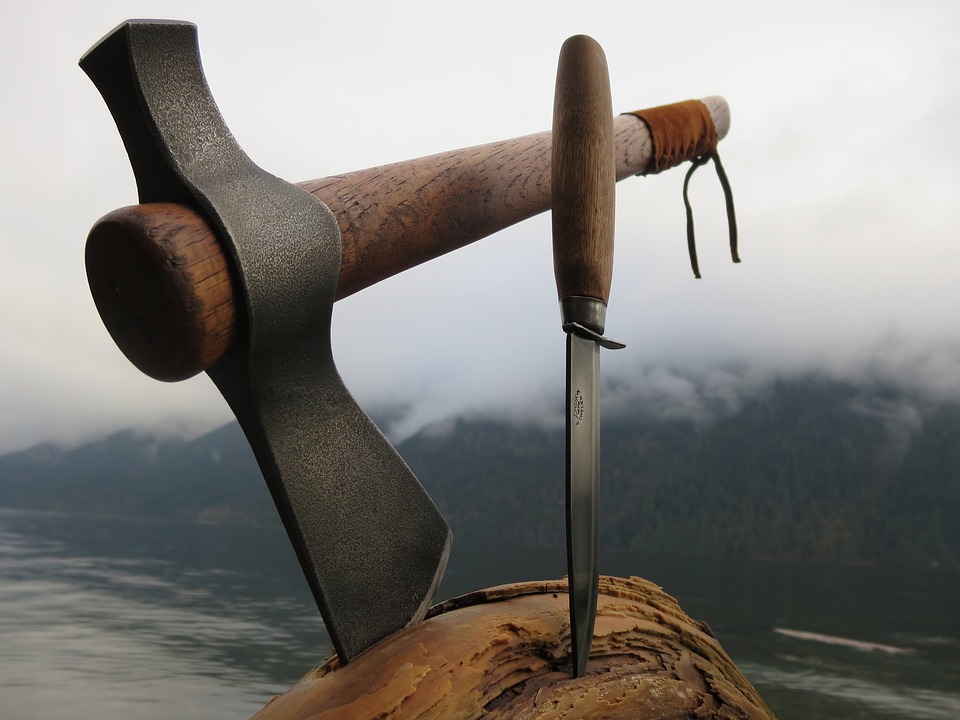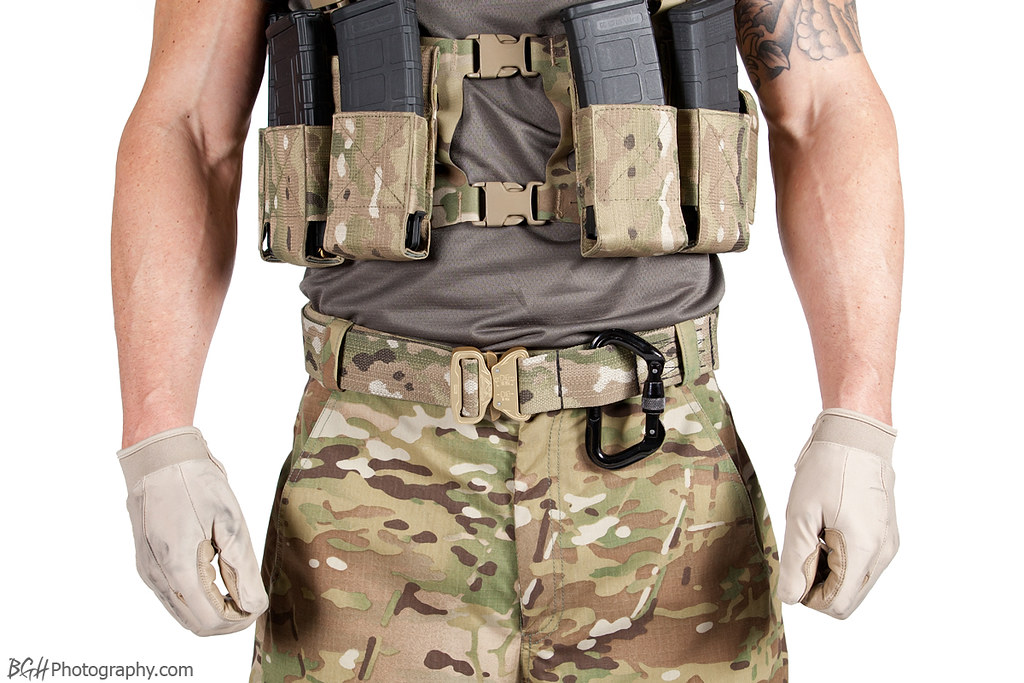What’s one tool that’s most neglected by preppers?
Without a doubt, it’s the axe. However, many preppers dismiss it in the favor of a knife or something a little less….messy.
In reality, an axe is one of the most versatile tools that you can use. From processing game to chipping firewood, axes are effective in various scenarios.
If you’re heading for the woods, the axe will save you tons of effort and time. And when it comes to self-defense, axes have earned a savage reputation that can hardly be matched by a knife.
The axe is one of the most ancient weapons used in human society, and throughout the ages, multiple variants were designed for specific purposes. Choosing the right design from these wide types of axes can be challenging. So we are here to tell you all about the 10 types of axes and their purpose. After having used different axes in the past few years, I feel that axes are the perfect tool when you want a sharp edge to make a shattering impact.
And the number of ways you can use it is simply limited by your imagination.
1. Tactical Axe
While axes are an ancient tool, the tactical axe is a relatively new invention. What makes it great for preppers is it can be used as a multi-purpose tool. While the primary use is for chopping, it’s also used as a shovel, hammer, and self-defense weapon.
Other than survivalists, the tactical axe is a popular choice for law enforcement teams, firefighters, and security staff. With a high-quality steel blade, this tool is perfect for building a fire, digging holes, and field-dressing animals.
The USMC Elite Tactical Bruiser Survival Tomahawk Axe is one of the best products in the market. It’s got a solid construction with a durable handle that makes it perfect for chopping wood or breaking bones. In addition, it also has a compass and a lanyard.
2. Cutter Mattock
A Cutter Mattock is also known as a Grub Axe and is mainly used for digging, chopping. It’s often used in gardening or for digging holes or trenches. While the exact origin of the cutter mattock is unknown, some say that it was popularized in the 17th century.
The tool has an axe on one side and a longer adze blade on the other. The axe is kept vertical while the adze blade is kept horizontal. This makes the adze blade more effective for penetrating deeper into the soil.
Truper 31638 Cutter Mattock is one of the best options that offer the right balance of quality and ergonomic design. The fiberglass axe handle is shock absorbent to make the tasks easier on your muscles.
3. Tomahawk
The Tomahawk has earned a reputation for being associated with Native American tribes. Basically, it’s a robust but lightweight axe with a long handle for heavy cutting work. They are designed with a lighter head to cut down the weight.
Tomahawks can be classified into two categories- the tactical tomahawk and the throwing tomahawk. While throwing tomahawks are mainly used for recreation, tactical tomahawks are used as multipurpose tools by the military, campers, and preppers.
I’ve used the CRKT Woods Chogan Tomahawk axe and found it as a top-grade tool for heavy-duty wood chopping. Apart from the high-quality carbon steel blade, it also has a hammerhead that makes it a great outdoor tool.
4. Hatchet
A hatchet is similar in design to a Tomahawk, with one major difference. It’s small enough for one-handed use. The compact size makes it ideal for use in small spaces and also easy to carry in a bug out bag.
Generally, hatchets are between 10 to 16 inches in length and weigh between 1 to 3 lbs. The opposite side of the small axe blade can have a hammerhead or a spike that makes it a versatile tool. While it’s small, the weighted axe head gives the hatchet considerable chopping and limbing efficiency.
If you’re looking to buy a hatchet, check out the SOG Tomahawk Tactical hatchet. The combination of an axe, spike, and a metal pommel makes it one of the best compact survival tools in the market.
5. Double Bit Axe
Double bit axes appeared in the mid-1800s and are used for cutting, splitting, and chopping wood. Since it has two edges, this axe doesn’t need frequent sharpening.
Another benefit is you can use the two edges for two different types of work. While one edge can be used to split wood, the sharpness of the other side of the head can be preserved for more precise work. Combined with a high-quality saw, this is a great tool for woodworking.
The Estwing Double Bit axe is a top-grade double bit axe with a forged steel structure and a solid grip. With two edges, the axe is a bit heavier. But that makes it great for heavy-duty tasks.
6. Felling Axe
The felling axe is one of the primary types of axes used specifically to cut down large hardwood trees. These are usually large in size, and the handles can extend beyond 36 inches. This also makes them heavy, with the weight going above 5 pounds for some designs.
To deliver a better cutting action, these axes have a long cutting edge. There are multiple varieties of felling axes. Some common types are Michigan or Dayton axes, named after the region in which they were developed.
Most top-end felling axes like the Helko Werk Germany Bavarian woodworker axe come with slim and sharp edges that penetrate deeper into the wood. Since the axe is for heavy cutting, the curved hickory handle provides the right grip.
7. Broadaxes
These axes were used for cutting timber for activities like wooden shipbuilding, log building, and for railroad ties. Broadaxes are between 32 to 36 inches in length and can weigh between 3 to 6 pounds.
Generally, broadaxes have a flat face and a bevel face. That means you can use them as left- or right-handed tools only. However, some broadaxes like the Muller Carpenters Right Bevel Broad Hatchet Axe, have a shorter length for working in small spaces.
The design allows you to use this axe as a more precise tool for creating a flat face on a block of wood. Also, it can be used along with a survival saw for general utility work.
8. Carpenter’s Axe
If you want an axe for woodworking tasks other than felling trees or chopping firewood, check out the carpenter’s axe. The design allows you to have better control of the edge and deliver precise cuts. Usually, carpenter’s axes are lighter in weight for easy handling.
These axes are small in size and ideal for tasks like woodworking or roofing. Some of the designs also have features like a notch on the blade that helps to pull out nails. Often, these axes have long beards that allow users to grip the handle closely for better control.
The Estwing – E32H Carpenter’s hatchet is forged from one piece of steel which makes it a great tool for carpentry. The shock-reducing grip works great when you need to use it for heavier tasks.
9. Hudson Bay Axe
The name of this axe is associated with Sir Henry Hudson, who used to trade with Native Americans in the 17th century. Originally, these axes came with a round eye. With time the design was altered to an oval eye.
Hudson Bay axes are around 22 to 28 inches in length and great for cutting and chopping jobs. While the relatively smaller head doesn’t make it ideal for felling, it’s an effective tool to tackle the jobs around a survival shelter.
The Snow & Nealley Hudson Bay axe is made from fine grain steel that offers excellent durability and edge retention. The top-notch craftsmanship makes it an easy-to-use campsite tool.
Final Thoughts
So these are the 10 different types of axes that are commonly used for various purposes around the homestead. Your choice will depend on the purpose of use, along with functionality and weight. That said, there’s no harm in picking multiple axes for different purposes.
While an axe isn’t a substitute for a survival knife, it’s best that you carry both in your bug out bag.
Be it building a shelter, hunting, digging, or self-defense, an axe is a tool that still holds its own in the era of technology.
But don’t just take my word for it. Best try it out.






